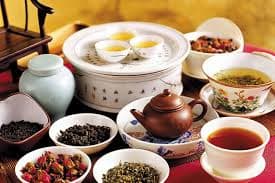A Complete Guide to Chinese Tea Culture

A Complete Guide to Chinese Tea Culture
Tea is more than just a beverage in China—it's a way of life. With a history spanning thousands of years, Chinese tea culture encompasses philosophy, art, and social customs. This guide will take you through the essentials of Chinese tea, from its origins to modern-day practices.
The Six Types of Chinese Tea
Chinese tea is traditionally classified into six categories, each with its own unique characteristics and processing methods:
1. Green Tea (绿茶)
The most popular type in China, green tea is unoxidized and known for its fresh, delicate flavor. Famous varieties include Longjing (Dragon Well) from Hangzhou and Biluochun from Jiangsu.
2. White Tea (白茶)
The least processed of all teas, white tea is made from young tea buds and leaves that are simply withered and dried. It has a subtle, sweet flavor and is prized for its health benefits.
3. Yellow Tea (黄茶)
A rare and expensive variety, yellow tea undergoes a unique process where the leaves are briefly heated and then wrapped in cloth to develop a distinctive yellow color and mellow taste.
4. Oolong Tea (乌龙茶)
Partially oxidized, oolong tea combines the fresh qualities of green tea with the complex flavors of black tea. Popular varieties include Tieguanyin, Da Hong Pao, and Dong Ding.
5. Red Tea (红茶)
Known as black tea in the West, red tea is fully oxidized and has a robust, malty flavor. Keemun and Lapsang Souchong are among the most famous Chinese red teas.
6. Dark Tea (黑茶)
Including Pu'er, dark tea is fermented and aged, developing complex flavors over time. It's often compressed into cakes or bricks for aging and is highly valued by collectors.